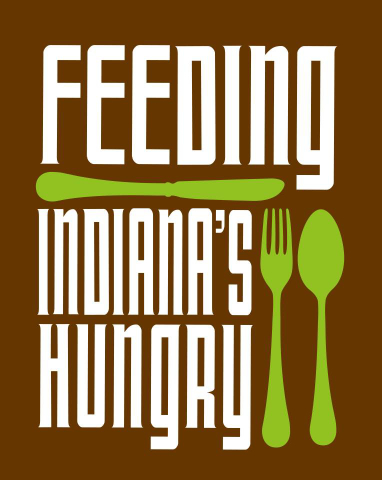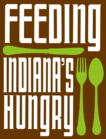 Feeding Indiana’s Hungry is committed to enhancing the quality of life for our clients through access to safe, nutritious food and other vital necessities. One in six Hoosiers is food insecure. Feeding Indiana’s Hungry supports legislation and administrative policies which recognize the needs of the more than 1.1 million Hoosiers Indiana food banks serve and increase the accessibility of nutritious food options to promote health, educational attainment, and workforce success for those in need.
Feeding Indiana’s Hungry is committed to enhancing the quality of life for our clients through access to safe, nutritious food and other vital necessities. One in six Hoosiers is food insecure. Feeding Indiana’s Hungry supports legislation and administrative policies which recognize the needs of the more than 1.1 million Hoosiers Indiana food banks serve and increase the accessibility of nutritious food options to promote health, educational attainment, and workforce success for those in need.
Feeding Indiana’s Hungry supports investment in healthy, Hoosier grown food through the Farms to Food Banks program funded through the ISDA.
Feeding Indiana’s Hungry asks for $300,000 in year one of the biennial budget and $500,000 in year two, to be spent on Indiana grown and produced food to help Hoosiers at risk of hunger through the food bank network.
Feeding Indiana’s Hungry supports removing barriers to public assistance enrollment and administration to ensure that programs that assist food bank clients are provided to those eligible for the assistance in the most efficient and cost effective way possible. We oppose establishing any additional barriers to public assistance eligibility or access or utilization.
Feeding Indiana’s Hungry supports the removal of a ban on receiving SNAP benefits by individuals with a past felony drug conviction.
Since welfare reform in 1996, individuals convicted of a felony which has as an element the possession, use, or distribution of a controlled substance are ineligible for SNAP benefits under federal law unless a state opts out of this requirement. Indiana is one of only 7 states still operating under a lifetime ban, since Texas and Alabama altered state public policies in 2015 and Georgia and Alaska followed in 2016.
Additionally, SNAP bans do not apply to any other types of felony convictions. Because women are the primary recipients of SNAP and women of color are more likely to get caught up in the racial disparities of the criminal justice system, the bans disproportionally affect children of color and their mothers.
Feeding Indiana’s Hungry supports the elimination of state SNAP asset limits through the enforcement of broad-based categorical eligibility.
In Indiana, a SNAP applicant household must have less than $2250 in assets ($3250 if the household contains a senior or individual with a disability) to be eligible. Assets include bank accounts, cash, real estate, personal property, vehicles not used for household transportation, retirement accounts, health savings accounts, education savings accounts, and individual development accounts. The household’s home and surrounding lot, household goods and personal belongings, defined benefit pensions and life insurance policies are not counted as assets in the SNAP program. Personal savings and assets pull families out of poverty and move them toward self-sufficiency. Asset limits adversely affect the recently unemployed who retain assets that must be spent down and seniors on fixed incomes.
Feeding Indiana’s Hungry supports legislative review on successes of job connection for unemployed SNAP recipients with arbitrary time limits for nutrition benefits.
Since welfare reform in 1996, SNAP requires all recipients who are able to work to by government definition (despite existing physical and mental impediments) do so unless there is an exemption. So-called able bodied adults without dependents (ABAWDs) who are financially eligible to receive SNAP benefits must meet special work requirements in addition to the general requirement to maintain eligibility.
ABAWDs can only receive SNAP nutrition assistance for 3 months in 3 years if the special requirements are not met. Outcome reporting from the IMPACT program would enable legislators to review the efficacy of the employment training and job placement program, whether it has assisted recipients to come off the program, and the impact on the charitable sector to provide services for individuals who have become ineligible for nutrition assistance and remain unemployed or underemployed.
Feeding Indiana’s Hungry supports public policy proposals that will bring healthy food options to food insecure Hoosiers.
Feeding Indiana’s Hungry supports healthy food financing programs that empower food banks and pantries to build capacity for perishable items.
Food bank clients struggle to afford and access food. 85 percent of food bank client households purchase inexpensive, unhealthy food because they cannot afford healthier options. About a third of households report watering down food or drinks to make what they have last longer, including infant formula. Some grow produce. About two-thirds of client households have received help from family and friends, and more than 40 percent have sold or pawned personal property to do what they can to provide enough food for their families.
Hoosier food bank clients make trade-offs regularly:
• 77% choose between paying for food or utilities;
• 79% between food and transportation;
• 63% between food and housing.
Notably, nearly half of client households have incorporated charitable food assistance into their monthly food budgets. Emergency food assistance programs allow clients to address core food expenses so that limited income can be allocated elsewhere.
Food deserts are a part of the larger problems of hunger and healthy food access.
Food banks have developed innovative strategies to bring fresh produce and other nutritious foods into food deserts which include mobile pantries, trucks that drive out to communities that lack access to traditional food pantries or retail and distribute food. Additionally, there are roughly 1,800 charities already operating around the state that, with a modest grant or loan, could increase cold storage space or purchase mobile refrigeration to provide additional produce to assist Hoosier families.



